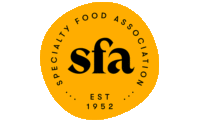Frozen Food Sales Reach $22 Billion
Frozen food demand endures despite current trends focused on fresh ingredients

As the rising popularity of farmers markets and the locavore movement attest, fresh foods are in high demand among American consumers. As a result, popular food segments of yesteryear—namely frozen and canned products—have gotten the cold shoulder as consumers often unfairly adopted the largely inaccurate presumption that fresh foods were significantly more nutritious than frozen or canned varieties. The emergent popularity of meal kits has likewise posed a challenge to frozen foods.
Nevertheless, the frozen food market has proven to be largely resilient in the face of both the fresh food and meal kit trends. Sales have been steady, if unspectacular, since 2012, according to market research firm Packaged Facts in the new report Frozen Foods in the US: Hot Meals, Sides, and Snacks, 6th Edition. Packaged Facts estimates that frozen food products in the collective categories of dinners/entrées, pizza, side dishes, and appetizers/snacks had overall sales of $22 billion in 2016, almost identical to the sales total four years prior.
Packaged Facts estimates that frozen vegetables are used in three out of four US. households, and 60% use frozen potatoes. Just over 60% are frozen pizza consumers, with dinners as well as entrées used in about 40% to 45% of households. Likewise, more than a third of US households are consumers of frozen snacks. Most encouragingly, Packaged Facts’ survey data reveal that 90% of consumers buy packaged frozen hot meal items for heating or microwaving at home, a share that is up substantially—15 percentage points—in just two years.
While convenience may be thought of as the driving factor in purchase of frozen foods, quality and healthfulness are of paramount importance, reflecting the recent reformulating and repositioning of leading brands and the growing presence of emerging brands that emphasize these qualities. This points to frozen food manufacturers’ willingness to face the thriving fresh food market head-on by making the necessary formulation and marketing adjustments to remain competitively relevant. In addition, convenience may play a less decisive role than might be expected, as consumers simply assume that this is a feature automatically associated with frozen meal items.
Looking for a reprint of this article?
From high-res PDFs to custom plaques, order your copy today!






